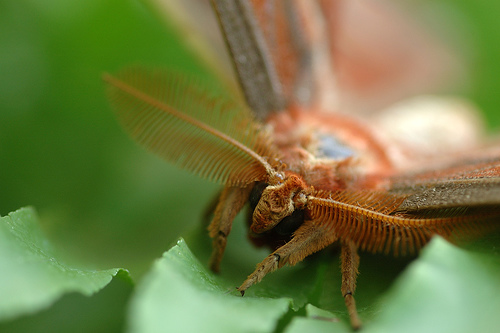
Image: t_buchtele
Butterflies and moths belong to the order Lepidoptera, which is derived from the Greek words for "scaled wing." There are over 180,000 species in this order, only about 10 percent, however, are butterflies - the rest are moths. The first primitive moths evolved over 140 million years ago (butterflies, the belles of the ball, came fashionably late about 40 million years ago).
Moths are usually glossed over for butterflies, their "prettier, more attractive" cousins. But no more! Neatorama is setting the record straight: moths are truly awesome bugs! Here are some of the strangest and most beautiful moths of the world:
Brahmin Moth
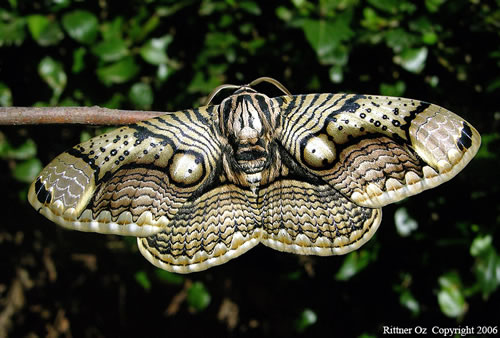
Indonesian owl moth (Brahmaea hearsyi). Photo: Rittner Oz
Those who say moths aren't as beautiful obviously haven't seen the Owl or Brahmin moth family with lots of large, brown moths with intricately patterned wings.
Luna Moth
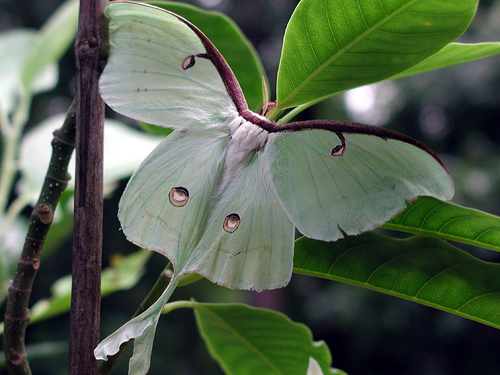
Luna Moth. Image: Paphio [Flickr]
True, most moths have drab colors, but this isn't the case with the gorgeous Luna Moth (Actias luna), which has large, shimmery lime-green wings with undulating "tails." Like some other moths (see below), the adult Luna moth does not have mouth and does not eat - it lives for only about one week, with the singular purpose of mating!
Hummingbird Hawkmoth
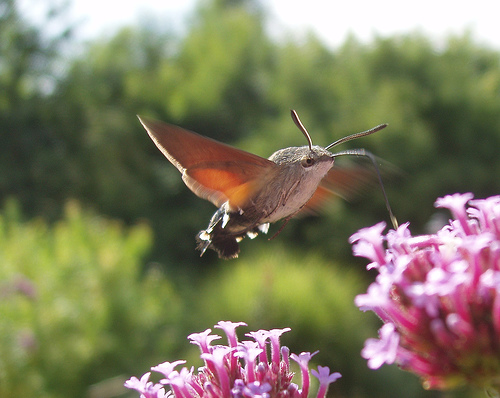
Hummingbird Hawkmoth. Image: janerc [Flickr]
The Hummingbird Hawkmoth (Macroglossum stellatarum) looks like a hummingbird. It hums when it flies, hovers and feeds on flowers just like one, too - so it's easy to mistake one for a tiny bird!
Vampire Moth
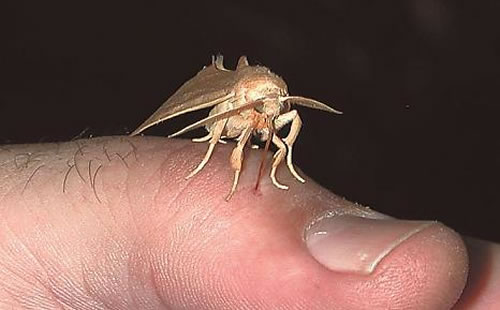
Calyptra thalictri or vampire moth sucking blood.
Image: Helsingin Sanomat - via Treehugger
The Calyptra thalictri moth isn't all that peculiar looking - but its look is not why it's in this list: this "vampire moth" can pierce the skin and suck blood! If that's not strange enough, other species of Calyptra are known to suck tears from the eyelids of cattles.
Atlas Moth and White Witch
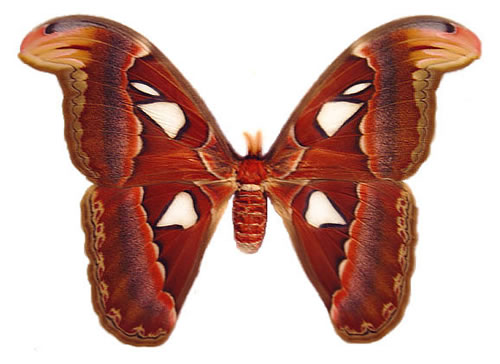
Atlas moth (Attacus atlas). Image: Gregory Phillips [wikipedia]
The Atlas moth (Attacus atlas) is considered the world's largest moth by total wing surface area. The moth's cocoon is so large that it's used as a lucky charm in in Africa, pocket purses in Taiwan and ankle rattles in Mexico.
Large as it is, like the Luna moth, the adult Atlas moth has no mouth and cannot eat throughout its one to two weeks life (it does all its eating in the larva stage).
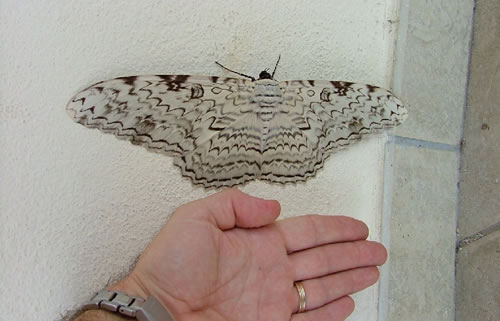
White witch moth (Thysania agrippina). Image: Stephane Larroque
In terms of wingspan, however, the white witch moth (Thysania agrippina or Giant aggrippina) is larger: fully stretched, its wingspan can be as wide as 12 inches (30.5 cm). When flying, this moth is usually mistaken as a bat!
Hornet Moth
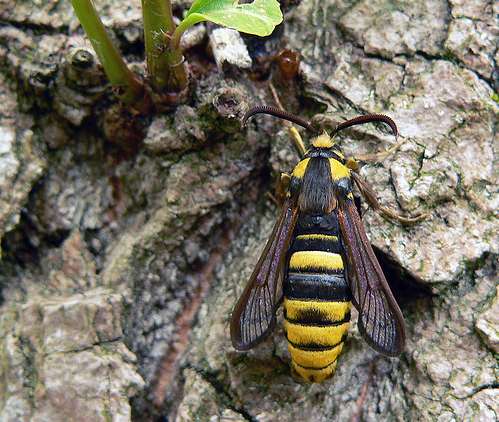
Hornet moth (Sesia apiformis). Image: gorpie [Flickr]
Like its name implies, the Hornet Moth or Hornet Clearwing (Sesia apiformis) looks just like a hornet, but is completely harmless. It is as large as a real hornet and even has the same jerky flight-pattern when disturbed - a great example of mimicry!
Io Moth
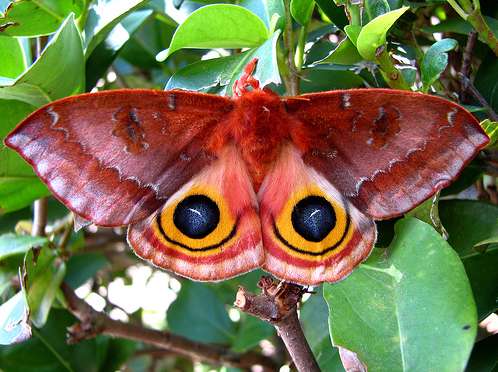
Io moth. Image: Aliaaaaa [Flickr]
When threatened, the Io moths (Automeris io) will spread their wings to reveal a startling eyespot pattern, used to deter predators!
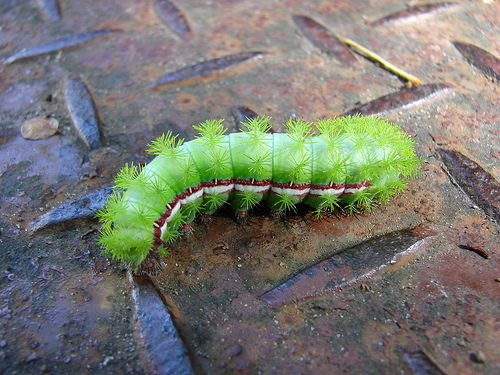
Io moth larva. Image: sarowen [Flickr]
The beautiful io moth larva is actually considered a pest - it eats the leaves of hundreds of plant species, and has venomous spikes that can be quite painful when handled. In a twist of fate, the ravenous larva grows up to be a beautiful adult moth that, like the Atlas moth, has no mouth so it cannot eat!
Leopard Moth

Giant Leopard moth. Image: normanack [Flickr]
The Giant Leopard Moth or Eyed Tiger Moth (Hypercompe scribonia) has a distinct pattern of black rings, reminiscent to those found in its namesake the leopard. The moth's unmistakeable colorings is aposematic, meaning that they are actually "advertising" the bug's unpalatability to potential predators.
White Plume Moth
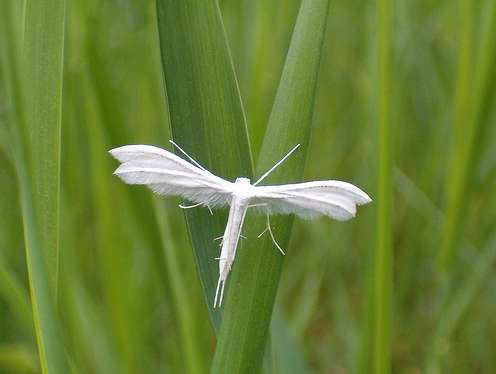
White Plume Moth. Image: n_ila [Flickr]
Is that a large white mosquito? No, that's Pterophorus pentadactyla or the White Plume Moth. This moth is completely white and has a wing with the appearance of fine feathers. Unlike other moths that fold its wings when perched, the White Plume Moth holds its wings open in a T-shape.
Poplar Hawk Moth
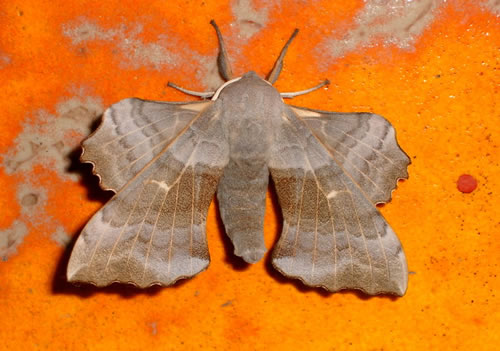
Poplar Hawk Moth. Image: Michael Menzlaff [wikipedia]
The Poplar Hawk Moth (Laothoe populi) is one odd-looking moth. Its irregularly shaped wings enable it to camouflage itself in a cluster of dead leaves on its main host tree, the poplar.
If you disturb this moth, however, it will suddenly reveal a bright orange-red patch on the underside of its wings - as a distraction or startle display - before it flies away.
Death's Head Hawkmoth
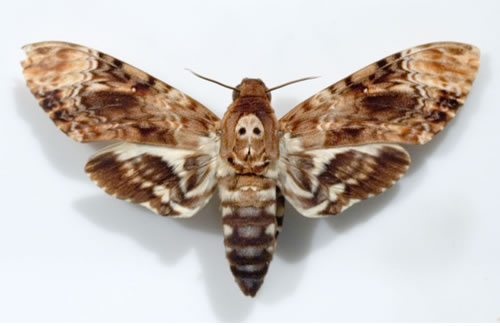
Acherontia lachesis, a species of Death's Head Hawkmoth. Image: Trevor H [Flickr]
With a name like Death's Head Hawkmoths (Acherontia), they better be exceptional moths! Indeed, in addition to the unmistakeable skull pattern on the back, these moths can also produce a loud squeak when irritated!
A species of the Death's Head Hawkmoth, A. atropos, is probably the most popular moth in the world. It is displayed in the poster for the movie The Silence of the Lamb.
Other Moths
With some 160,000 species of moths in the world, I readily admit that this list is far from complete - If you think we've overlooked a particularly cool, strange, or beautiful moth, please leave a note (and link) in the comment section below.





